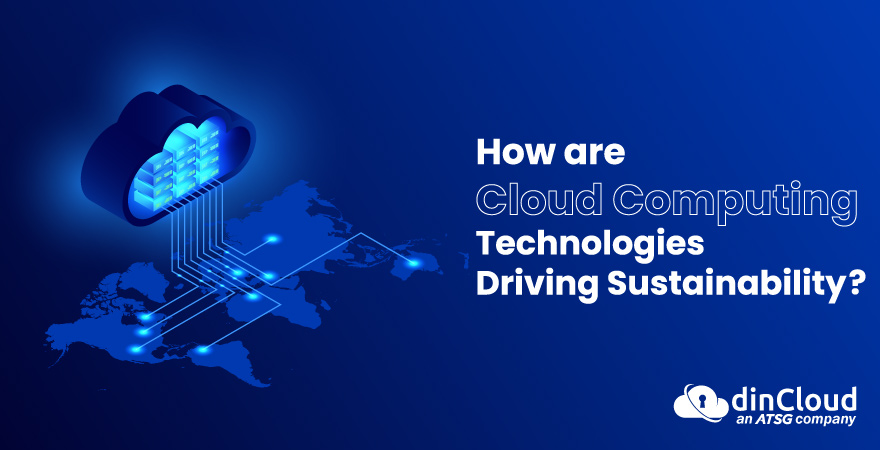Earth is the only planet in the universe known to possess life. Unfortunately, we have not been able to take good care of our beloved planet. The burning of fossil fuels, deforestation, millions of metric tons of pollution annually, and the resultant climate change can prove disastrous for our future generations.
The silver lining in this gloomy situation is that with increased public awareness, people today are much more conscious about consuming things through an “environmentally friendly lens”.
They also expect, and demand businesses to act in a responsible manner. As social and political pressure builds up, enterprises are realizing that “conscious entrepreneurship” is becoming the future staple of businesses.

Sustainable Technologies
Sustainability has now become a hot topic inside boardrooms as well. Top executives, shareholders, and investors are becoming increasingly aware of the far-reaching implications of the Environmental, Governance, and Social (ESG) ratings, on their businesses. Fortunately, technology is playing a key role to ensure that enterprises are able to make an impact through their Corporate Social Responsibility (CSR) practices, without hurting profitability.
Eco-conscious technologies can be our best bet to accelerate and scale the positive impact of environmentally friendly practices. Cloud Computing is one such technology that has positively contributed to globally sustainable practices.
Can Public-Private Partnership Foster Sustainability?
Organizations these days, both public and private, are adopting the latest technologies to curb the emissions of greenhouse gases from their operations.
In order to diversify their “economic mix”, all the Gulf Cooperation Council (GCC) countries have pledged to take formal initiatives to promote sustainable efforts for a better future. These initiatives include waste management, renewable energy consumption, reduction in carbon footprint, and effective water management.
The general manager of a leading tech company in the UAE, Naim Yazbeck, said that private enterprises and governments must work in harmony to fulfill their sustainable practices. He is of the opinion that businesses should be transparent about their de-carbonization efforts and initiatives.
For a greener future, the accurate role and duty of the private, as well as the public sector is yet to be completely determined. However, Yazbeck seemed hopeful that everyone is at least reaching the conclusion that the well-being of our future generations must be preserved and protected right now before it’s too late. Technology can be a key enabler in these efforts.
How Technology Drives Sustainability?
The reality of sustainability has now changed from just being a perspective to a business imperative. Enterprises are working towards aligning their operational goals with sustainability objectives.
Businesses can leverage Artificial intelligence (AI) technology, to develop prototypes of environmentally sustainable products and day-to-day solutions.
AI-powered technologies can also be leveraged by manufacturers to gain information about the carbon footprint of a certain product. Enterprises can then track down the entire supply chain of that product, to find out where the actual problem lies. This way, they can work towards the de-carbonization of all their products, and eventually reduce their overall carbon footprint.
In the present times, intelligent Cloud-powered AI solutions and advanced analytics can also be used to identify the water consumption of an entire city. This information can be used to effectively manage water supply.
In order to achieve tangible progress, sustainability engineers are leveraging a slew of technologies to derive out-of-the-box solutions regarding numerous ongoing problems.
The Role of Cloud Computing in Environmental Sustainability
In today’s socio-political environment, the demand for businesses to go green has never been stronger. Technologies, such as Cloud Computing, can help businesses not only gain scalability and flexibility but also slash their carbon emissions by a considerable amount.
The following points will help us get a better picture of how Cloud Computing technology is playing a vital role in various sustainability efforts.
- On-premise infrastructure usually utilizes obsolete equipment, that requires an unreasonable amount of non-renewable energy consumption. Cloud-based solutions leverage the latest and highest quality equipment that does not waste extra electric power to cool their data centers.
- Unlike individual on-premise solutions, a lot of leading Cloud Service Providers (CSPs) are working towards powering their data centers with renewable energy resources.
- Numerous CSPs follow the Power Purchase Agreements (PPAs) that ensure a greener supply chain.
- CSPs usually build their ‘green’ data centers in close proximity to power-generating facilities. This prevents the loss of energy, particularly over long-distance transmission processes. Enterprises deploying on-premise data centers, usually do not have the flexibility or luxury to achieve this.
- With well-planned and utilized IT infrastructures provided by CSPs, enterprises do not have to purchase and maintain private data centers.
- Cloud-based IT resources provided by CSPs never sit idle, and there is minimal resource wastage. All this helps CSPs achieve economies of scale, which are eventually passed on to tenant enterprises in the form of reduced costs.
- Virtualization also allows CSPs to efficiently and responsibly leverage the hardware at their disposal. This also reduces IT-related overheads, like cooling, heating, and ventilation.
- Cloud-based solutions also helped enterprises seamlessly adopt remote-based workflows, particularly during the global pandemic. This also helped employees decrease their fuel consumption on daily commutes, and all the employees had seamless access to all the necessary IT resources.
- When enterprises reduce the utilization of physical hardware from their daily operations, this de-materialization helps them in cost saving and waste reduction.
- According to a study by Smart 2020, when enterprises save energy by leveraging the right kind of technology, they save up to US $947 billion annually. This cost efficiency can be a great incentive for Chief Financial Officers (CFOs) to adopt Cloud-based solutions.
Conclusion
Sustainability cannot be achieved in a vacuum. Enterprises have to bring together various technologies, strategies, and stakeholders, so they can understand the significance of adopting sustainable practices in their operations. The goal here should never be to generate revenues by becoming green, but rather to generate maximum revenues sustainably.


